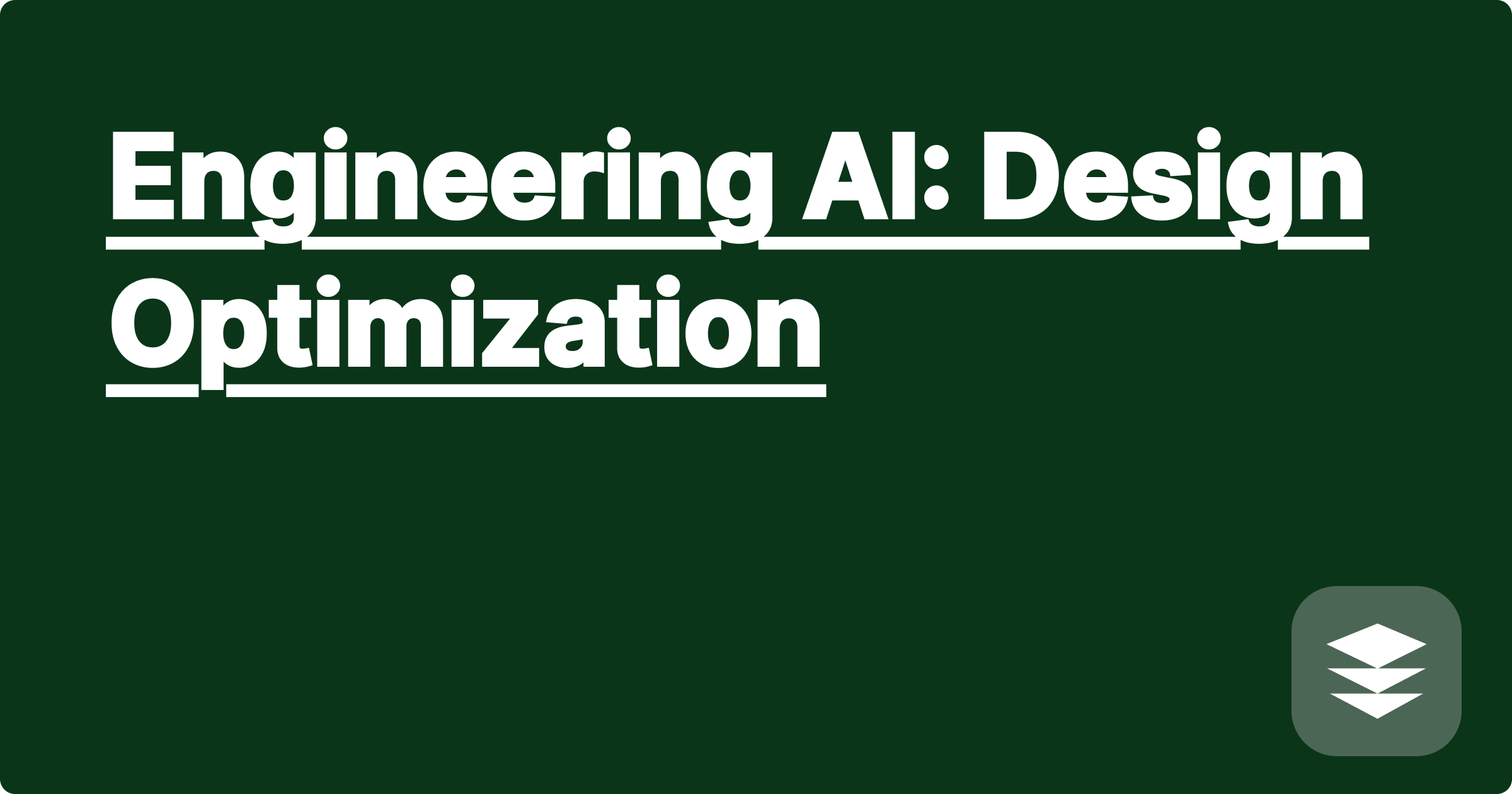
The relentless pursuit of optimal design solutions lies at the heart of many STEM disciplines. Whether designing a lightweight yet robust bridge, formulating a new drug molecule with maximal efficacy, or developing an energy-efficient algorithm, engineers and researchers constantly grapple with complex design spaces and trade-offs. Artificial intelligence (AI) is emerging as a transformative tool in this domain, offering the potential to navigate these intricate landscapes and uncover innovative solutions that push the boundaries of what's possible.
For STEM students and researchers, mastering AI-driven design optimization is no longer a luxury but a necessity. These techniques are rapidly becoming integrated into various fields, from mechanical and aerospace engineering to materials science and drug discovery. Understanding how to leverage AI for design optimization will not only enhance research outcomes but also equip students with highly sought-after skills for the future job market. Embracing these powerful tools will empower the next generation of STEM professionals to tackle increasingly complex challenges and drive innovation across industries.
Design optimization involves finding the best set of design parameters that satisfy a given set of objectives while adhering to specific constraints. This can be a highly challenging task, especially when dealing with complex systems involving numerous interacting variables. Traditional optimization methods often struggle to handle high-dimensional problems, non-linear relationships, and noisy data. Furthermore, exploring the entire design space can be computationally expensive and time-consuming, especially when relying solely on simulations or experiments. For example, in aerospace engineering, designing an aircraft wing involves optimizing parameters like wingspan, airfoil shape, and material properties to minimize drag, maximize lift, and ensure structural integrity. This requires navigating a complex design space with potentially conflicting objectives and constraints.
AI offers a powerful suite of tools for tackling design optimization challenges. Machine learning algorithms, in particular, can learn complex relationships between design parameters and performance metrics from data. This allows them to predict the performance of new designs without the need for expensive simulations or experiments. AI tools like ChatGPT, Claude, or Wolfram Alpha can be utilized in different stages of the optimization process. ChatGPT and Claude, for instance, can assist in formulating the problem, generating initial design ideas, and exploring the design space through interactive dialogue. Wolfram Alpha, with its powerful computational engine and vast knowledge base, can be used to evaluate complex mathematical functions, perform symbolic calculations, and generate visualizations.
One approach to AI-driven design optimization involves training a machine learning model on a dataset of existing designs and their corresponding performance metrics. This dataset can be generated through simulations, experiments, or a combination of both. Once trained, the model can be used to predict the performance of new designs. Next, an optimization algorithm, such as genetic algorithms or Bayesian optimization, can be employed to search the design space guided by the predictions of the machine learning model. This iterative process involves generating new design candidates, evaluating their performance using the model, and refining the search based on the results. Finally, the optimized design parameters are validated through further simulations or experiments.
Consider the design of a heat sink for cooling electronic components. The goal is to minimize the temperature of the component while minimizing the weight and cost of the heat sink. A machine learning model can be trained on a dataset of heat sink designs with varying fin geometries, materials, and dimensions, along with their corresponding thermal performance and weight. The model can then be used to predict the performance of new heat sink designs. A genetic algorithm can be used to search for the optimal design by iteratively generating new heat sink geometries, evaluating their performance using the model, and selecting the best designs for the next generation. Formulas for calculating heat transfer, such as q = hAΔT, where q is the heat transfer rate, h is the heat transfer coefficient, A is the surface area, and ΔT is the temperature difference, can be incorporated into the optimization process.
Another example involves optimizing the formulation of a new drug molecule. AI can be used to predict the binding affinity of a drug candidate to its target protein based on its molecular structure. A generative model, such as a variational autoencoder, can be trained on a dataset of existing drug molecules and their binding affinities. The model can then be used to generate new drug candidates with improved binding properties. This approach can significantly accelerate the drug discovery process by reducing the need for expensive and time-consuming laboratory experiments.
To effectively leverage AI in STEM education and research, students should develop a strong foundation in machine learning principles and optimization techniques. Exploring online courses, tutorials, and workshops can provide valuable hands-on experience. Furthermore, actively participating in research projects and collaborating with experts in the field can provide invaluable insights and practical skills. Students should also familiarize themselves with various AI tools and platforms, such as TensorFlow, PyTorch, and scikit-learn. Critically evaluating the strengths and limitations of different AI algorithms is crucial for selecting the most appropriate tool for a given task. Finally, staying updated with the latest advancements in AI research and attending conferences and workshops can help students stay at the forefront of this rapidly evolving field.
In conclusion, AI is revolutionizing design optimization across various STEM disciplines. By mastering these powerful tools, students and researchers can unlock unprecedented levels of innovation and tackle increasingly complex design challenges. Embracing AI is not just about learning new techniques; it's about transforming the way we approach problem-solving and pushing the boundaries of what's possible in science and engineering. Continue exploring the resources available, experiment with different AI tools, and collaborate with peers to further develop your skills in this transformative field.
Physics Help: AI Problem Solver
Engineering AI: Design Optimization
STEM Success: AI Learning Tools
Data Science AI: Analysis Boost